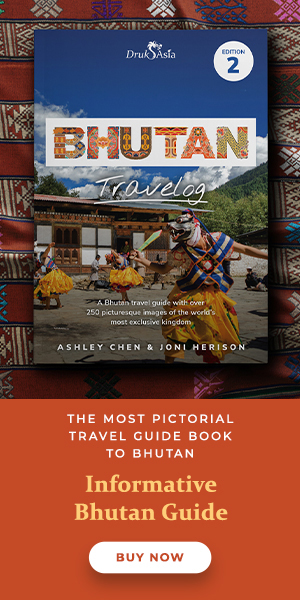BHUTAN
Travelog
The Eight Auspicious Symbols of Bhutan: Meanings and Significance

If you’ve ever walked into a Bhutanese temple, dzong, or traditional home, chances are you’ve seen a series of intricate motifs gracing the walls, doorways, or offering tables. They are known as the Eight Auspicious Symbols, or Tashi Tagye in Dzongkha, and they carry deep spiritual significance in Bhutanese culture and Vajrayana Buddhism.
In Bhutan, these sacred symbols aren’t just confined to religious spaces. You’ll find them on textiles, coins, murals, thangka paintings, and even on souvenirs. But what exactly do they mean? And why do they hold such a revered place in Bhutanese tradition? Let’s explore each one and uncover the profound messages they represent.
1. The Parasol (Dhug) – Protection and Royalty

The parasol symbolises protection from harmful forces—both physical and spiritual. Traditionally used to shield royalty from the harsh sun, it now represents spiritual preservation, safeguarding beings from suffering, and sheltering them on the path to enlightenment. In Bhutan, it also signifies the noble status of the Buddha and his teachings.
2. The Golden Fishes (Sernya) – Liberation and Fearlessness

These twin fish represent joy, spontaneity, and liberation from the cycle of rebirth. Often shown swimming freely in water, they reflect fearlessness in moving through life’s challenges. For Bhutanese Buddhists, they remind practitioners to swim freely in the ocean of samsara (cyclic existence) without drowning in suffering.
3. The Treasure Vase (Bumpa) – Wealth and Spiritual Abundance

This symbol stands for inexhaustible treasure—both material and spiritual. The treasure vase is said to never empty, even when its contents are used, embodying the endless flow of blessings, prosperity, and wisdom. In Bhutanese rituals, offering vases are commonly used to invoke wealth deities and good fortune.
4. The Lotus Flower (Metok) – Purity and Enlightenment

The lotus grows in muddy waters yet remains unsoiled, making it a powerful symbol of purity, transformation, and spiritual awakening. In Bhutanese iconography, the lotus often serves as a throne for deities and enlightened beings, representing their untarnished nature amidst worldly suffering.
5. The Conch Shell (Dungkar) – The Voice of the Dharma

Once used as a trumpet in ancient times, the white conch symbolises the far-reaching and melodious sound of the Buddha’s teachings. It’s said to awaken beings from ignorance, spreading the truth across the universe. In Bhutan, you’ll sometimes hear it blown during religious ceremonies or seen etched onto sacred artefacts.
6. The Endless Knot (Peljor) – Harmony and Interconnectedness

The endless knot reflects the interdependence of all things, reminding us that everything in life is interconnected. It symbolises eternal continuity—of time, wisdom, and compassion. This symbol also represents the unending cycle of birth, death, and rebirth, as well as the harmony between religious doctrine and secular life.
7. The Victory Banner (Gyaltsen) – Triumph Over Obstacles

Originally used in ancient Indian warfare, the victory banner was repurposed in Buddhism to symbolise the Buddha’s triumph over Mara—the forces of ignorance and desire. Today, it represents victory over negativity and success in one’s spiritual journey. In Bhutan, it’s commonly raised during religious festivals and placed atop temples.
8. The Wheel of Dharma (Dharmachakra) – The Path to Enlightenment
Also known as the Dharma Wheel, this symbol stands for the teachings of the Buddha and the cycle of life. With eight spokes representing the Noble Eightfold Path, it encourages right living, mindfulness, and wisdom. In Bhutanese monasteries, the Dharma Wheel reminds practitioners of the core principles guiding their path.
Why the Eight Auspicious Symbols Matter in Bhutan
More than just sacred art, these symbols are part of Bhutan’s spiritual identity. Whether you’re visiting a temple in Thimphu or shopping at a handicraft market in Paro, you’ll see these emblems woven into the fabric of daily life. Bhutanese people use them to bless new homes, cars, or even travel journeys. They serve as constant reminders of higher values—compassion, wisdom, and the pursuit of enlightenment.
How to Spot Them During Your Trip
Keep an eye out for them carved on temple pillars, embroidered on traditional kiras and ghos, or hanging as painted banners in monasteries. For a deeper understanding, visit places like Tashichho Dzong in Thimphu or Paro Rinpung Dzong, where these symbols are often prominently displayed. Tour guides will happily explain their meanings, giving you rich insight into Bhutanese Buddhist philosophy.
The Eight Auspicious Symbols are expressions of a way of life that seeks peace, wisdom, and harmony. When you travel through Bhutan, take a moment to notice them. They’re everywhere, quietly reminding both locals and visitors of the path to spiritual fulfilment.
Follow Druk Asia on social media for inspiring travel stories, breathtaking photos, and the latest updates from Bhutan.
Ready to Experience the Magic of Bhutan?
Fill in the form below and the friendly Bhutan Travel Specialist team will get back to you with expert advice, itinerary ideas, and everything you need to know. No obligations, just warm guidance from those who know Bhutan best.
Thank you for your message!
Hang tight—one of our friendly Bhutan Travel Specialists from Druk Asia will be reaching out soon with expert tips, insider advice, and exciting itinerary ideas to help you plan the adventure of a lifetime!
Discover
Breathtaking
Bhutan.
Thank you for subscribing!
You have successfully subscribed to our newsletter.




